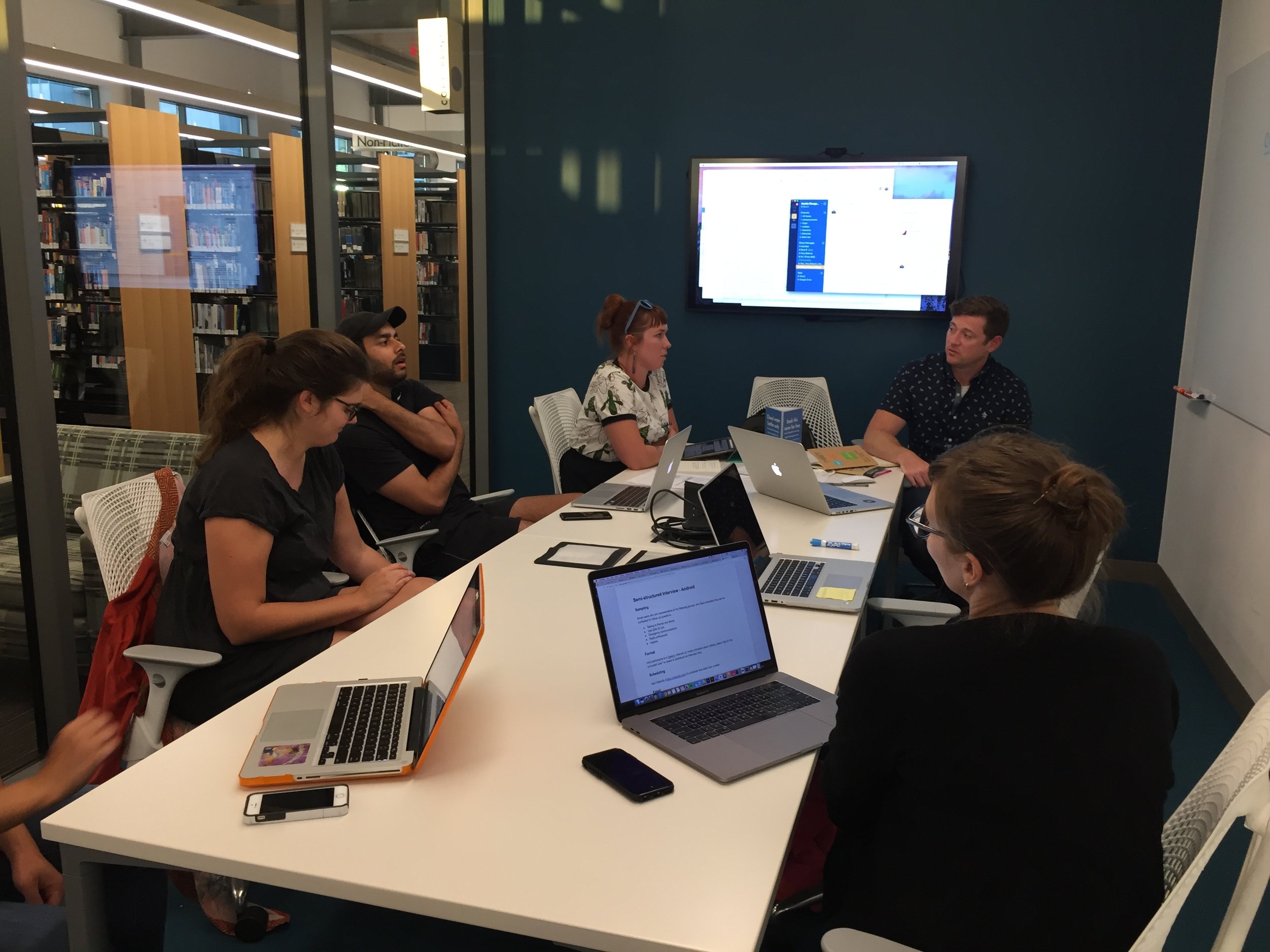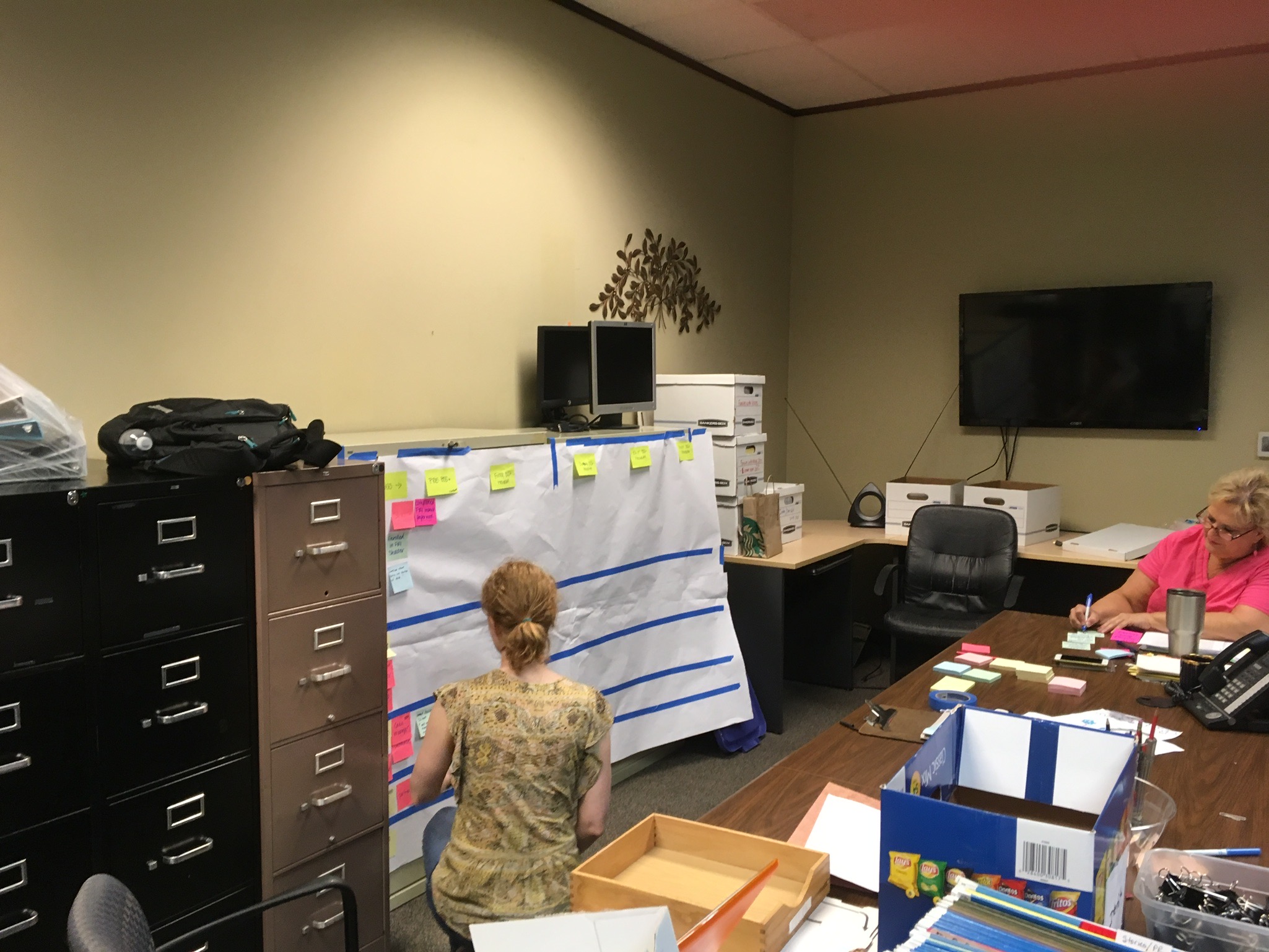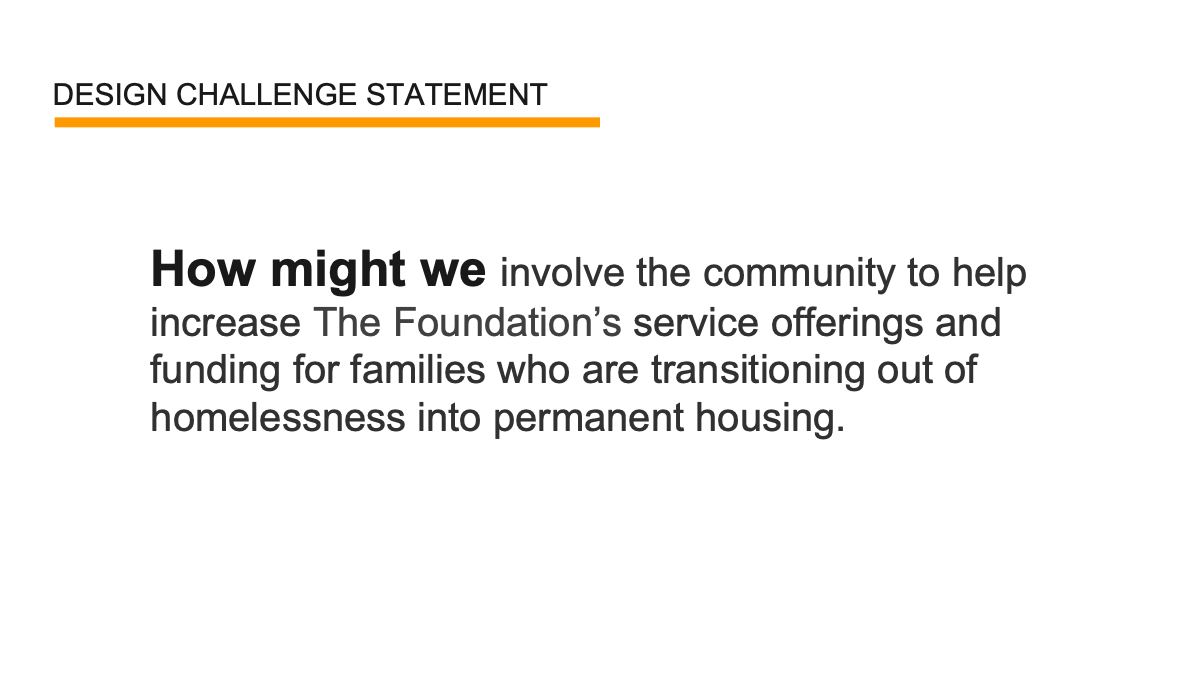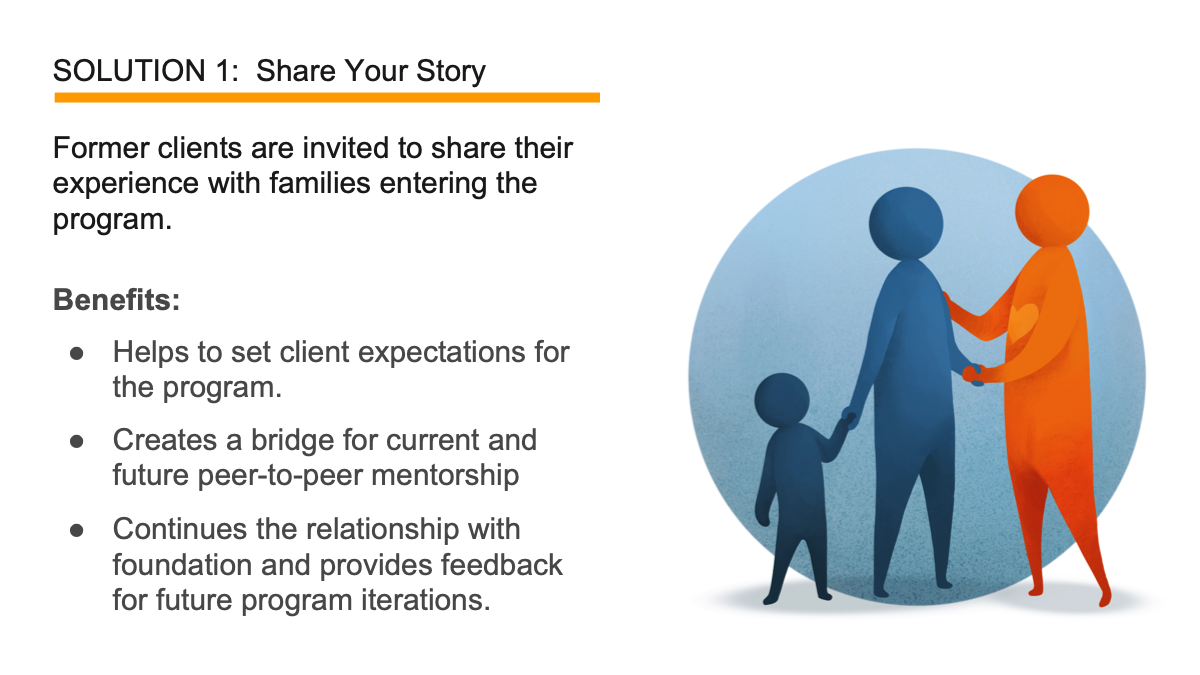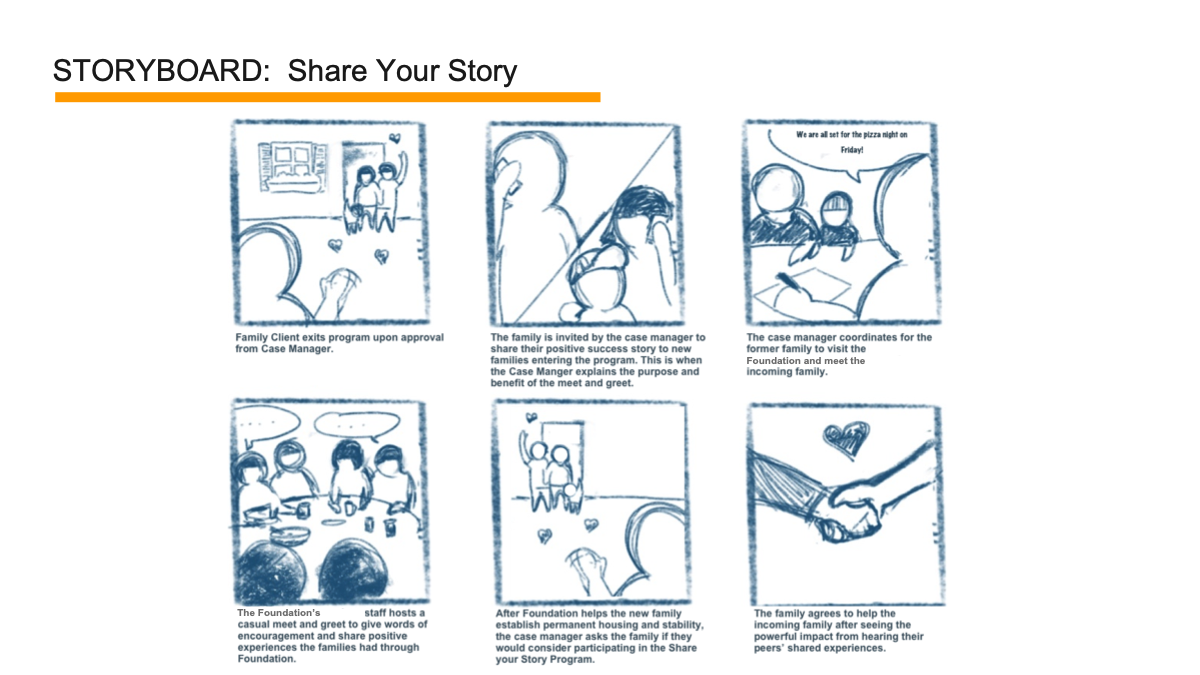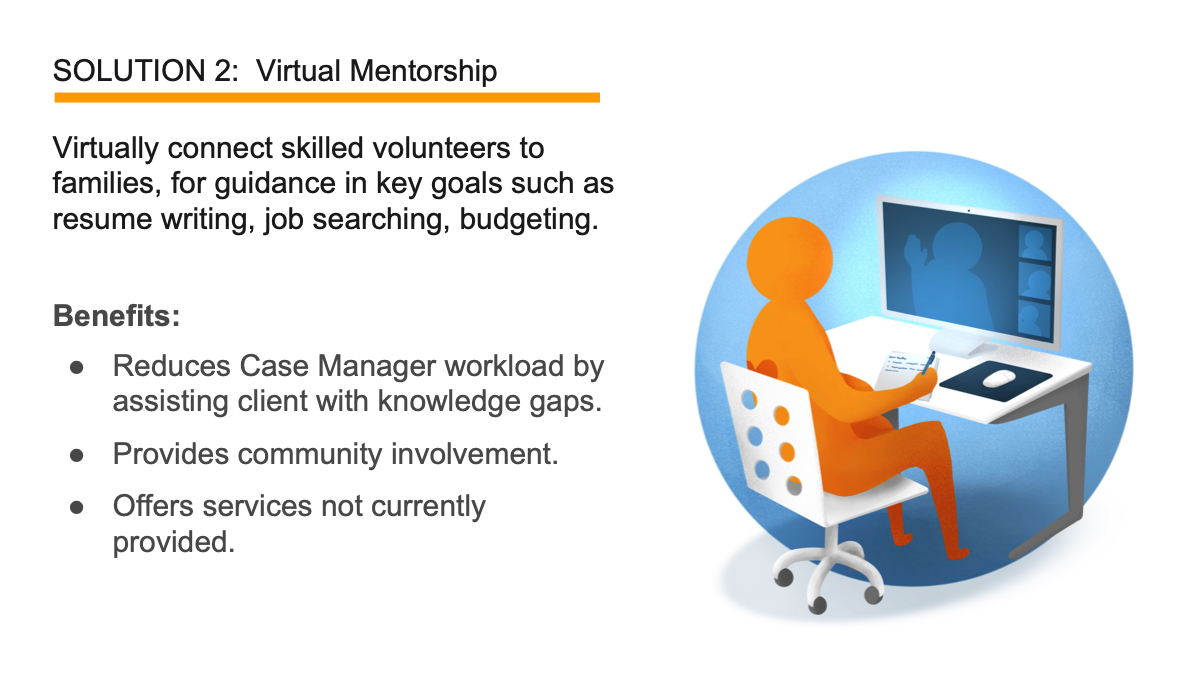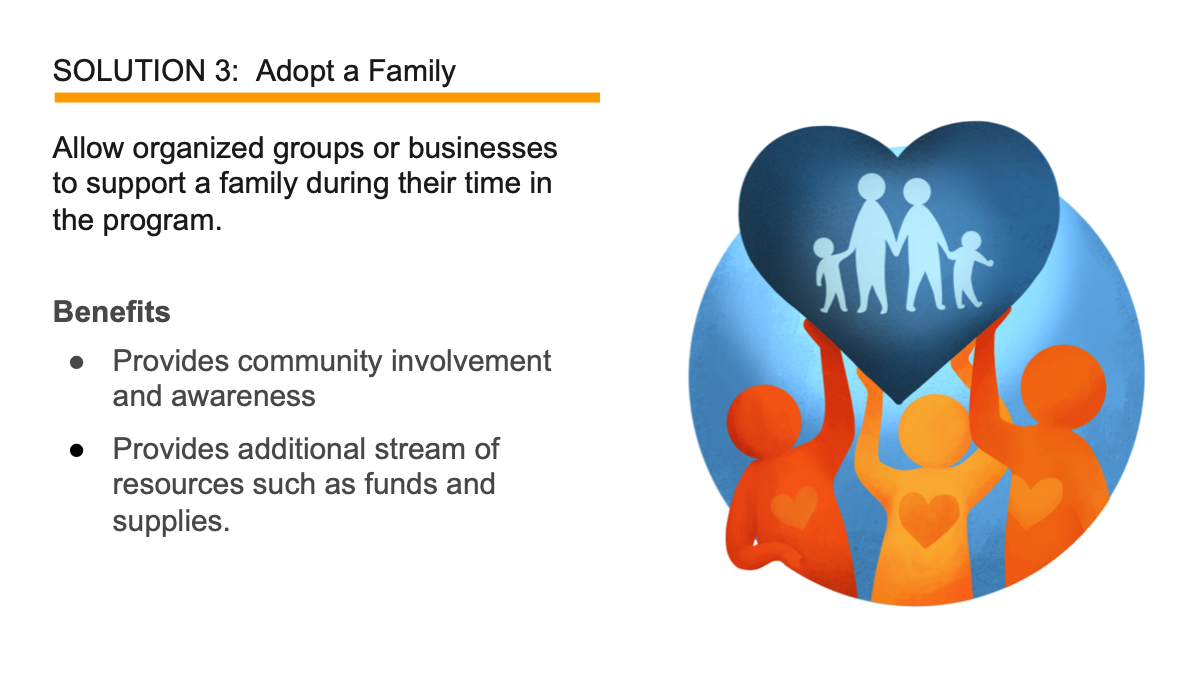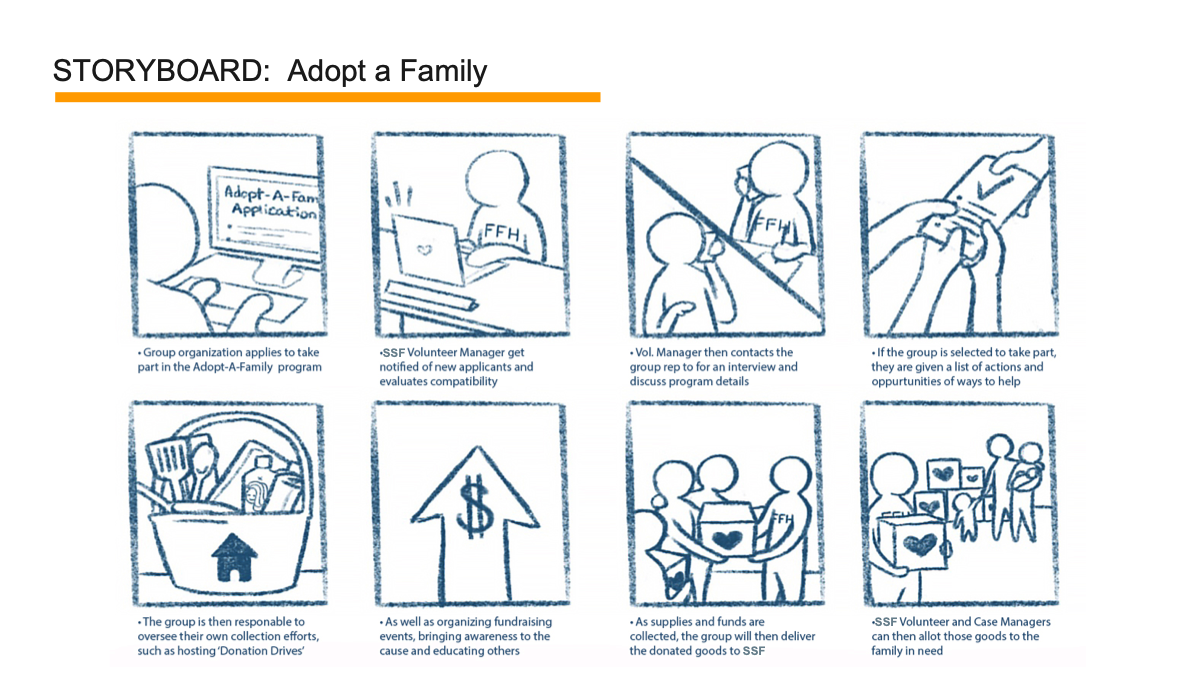Kristy Kelly
User Experience Researcher
The Project
Program Service Design For Non-Profit
As part of the AIGA Changemaker Series Austin launch, my team of six volunteer designers collaborated with The Foundation (TF)* on designing their new volunteer program. The project took place over four months. Our primary efforts were generative research and design concepts.
My primary contributions: Lead Design Researcher & Project Manager
* To protect confidentiality, I named the organization ‘The Foundation’, ‘TF’ for short.
The Approach
Our project started with an AIGA ‘Design Thinking’ workshop with our client, The Foundation (TF), an organization that helps people experiencing homelessness find permanent housing. TF provided a challenge statement - ‘Design a new volunteer program’.
Through different exercises, we learned about TF’s business structure, the service they provide and the clients they serve. The workshop was a great starting point for building empathy with TF and their clients.
The Discovery
After the workshop, my team still had many questions - including why TF wanted a volunteer program, where would it fit within their service ecosystem... and most importantly, what pain points would it solve for their clients.
Service Flow
At our first team meeting, we worked from the premise of The Foundation’s initial ask for a volunteer program. We had the ambitious goal to design a new volunteer program from scratch… something none of us had any experience doing.
We took a step back to look at the big picture. We created a service flow and thought about where a volunteer might enter the flow. Understanding the complexity of the service structure would turn out to be a work-in-progress…there were many layers.
Question List and Research Plan
At our next meeting, we brainstormed questions we had for our key players - TF’s Case Manager, Client and Program Manager, as well as our Future Volunteer.
Our main questions were around understanding why TF wanted a volunteer program, what problems it solved, if it was the right solution and where in the service it could be implemented.
Our research plan would be a mixed-method approach, attacking the challenge from multiple angles in an attempt to gain context. We would ‘divide and conquer’ to quickly write interview scripts, create a volunteer survey and conduct secondary research on similar services in the domain.
Interviews and Momentum
While we were successful at interviewing a Case Manager early in the project, the next several weeks proved challenging. Scheduling interviews was tricky due to lack of availability for both the client and design team.
Our key blocker was connecting with a TF client. There were both logistical and confidentiality reasons that made it difficult for us to meet with a current or former client. Scheduling an interview with TF’s Program Manager was also challenging due to audits, grant writing and vacations.
To keep our momentum going, the design team met weekly to review any data, discuss blockers and revise our tactics and schedule.
Journey Mapping
During our initial interview with the Case Manager, I suggested we do a journey map exercise to quickly identify gaps and pain points. I conducted the journey map exercise with one of my teammates, the Case Manager and her client.
We only had one hour but it revealed interesting behaviors and pain points - there were many paper forms involved and heavy investigative research performed by both the Case Manager and her client. I’m a big fan of journey mapping!
Pivoting
Pivoting tactics was key for the project to keep move forward.
To circumvent scheduling hurdles, we tried different data collection methods. For instance, to replace an in-person interview with the Program Manager, I created a Google doc questionnaire. We also incorporated an informal client interview during our journey mapping session.
As we gathered data, we uncovered complex layers in TF’s ecosystem. Given our looming deadline and lack of domain experience, it was clear we would not be able to design the logistics of an implementable program. We decided to narrow the project scope and deliver design concepts instead of a complete program design.
The Analysis
We met to analyze the data we had gathered. Our initial feelings were that we had not gathered enough data to do a proper assessment, due to lack of time and limited access to the TF client. The mixed-methods approach however, paid off and we were able to identify opportunity areas.
Business Goals
From our client feedback, we gained clarity around the Foundation goals:
Increase offerings to client, without increasing costs to Foundation
Increase community awareness of TF and fundraising efforts
Reduce Case Manager workload
We also clarified their service model goal: Have clients in permanent housing within 90 days of entering the program.
Persona Goals
When we started our research, we thought The Volunteer would be a key persona for our work. Once we narrowed our project scope, we shifted our attention to The Case Manager and The Client.
Key Goals During Program:
Client: Obtain an affordable lease in own name, settle into new life and be self sufficient
Case Manager: Help clients navigate the barriers they face to self sufficiency
Service Themes and Gaps
One of the key insights we gained from our research was how proactive and resourceful both The Case Manager and The Client had to be for the service to be successful. Logistics and resourcing issues were key pain point themes that emerged.
Opportunity Areas
We determined our top three opportunity areas as:
There were gaps in communication between TF and their client during and after the program ended. No client feedback was collected to help improve the service or help the client continue success after exiting program.
During the program, the Case Manager and client’s efforts were spread thin with budgeting and resourcing for basic needs.
The service provided does not directly assist with primary roadblocks the clients encounter during the program - child car, car repairs, etc.
Challenge Statement
Before we ideated design solutions, we reframed our challenge statement to align better with goals and clearly state the problem.
The Deliverables
Design Concepts
We ideated several solution concepts, voted and selected the top 3 ideas. Three of my teammates took ownership to create storyboards and one designed the concept illustrations. Along with the solutions, we presented The Foundation leadership with a pitch deck that they could present to their Board of Directors to help them advocate for a new volunteer program.
The Lessons Learned
Don’t be afraid to change scope, be flexible and pivot to keep project moving - doing so helped us deliver results.
Assess project risks and clarify business goals at start of project - not doing so quickly enough, set us back.
Be open to implement mixed research methods - provides opportunity for a rich dataset and if one method fails, you have another as backup - we needed it!
The End










